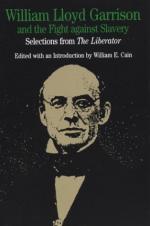|
This section contains 9,661 words (approx. 33 pages at 300 words per page) |

|
SOURCE: Castiglia, Christopher. “Abolition's Racial Interiors and the Making of White Civic Depth.” American Literary History 14, no. 1 (spring 2002): 32-59.
In the following essay, Castiglia explores the dynamics of American social reformist discourse as mediated through a scheme of white sympathy and virtuous black suffering, using Garrison's writing and speeches as principal sources.
How social order became understood in relation to the description and reform of specific types of citizens' interiority (their “natures” or “characters,” emanations of the “deep” self) is a topic central to understanding how social reform affected public opinion in the nineteenth-century US and how it continues to shape American social life to this day. Michel Foucault, in Discipline and Punish: The Birth of the Prison (1977), famously places the “inward turn” of state control at the advent of modernity, a shift he characterizes as a move from coercion, punishment, and the infliction of death to pastoral...
|
This section contains 9,661 words (approx. 33 pages at 300 words per page) |

|


